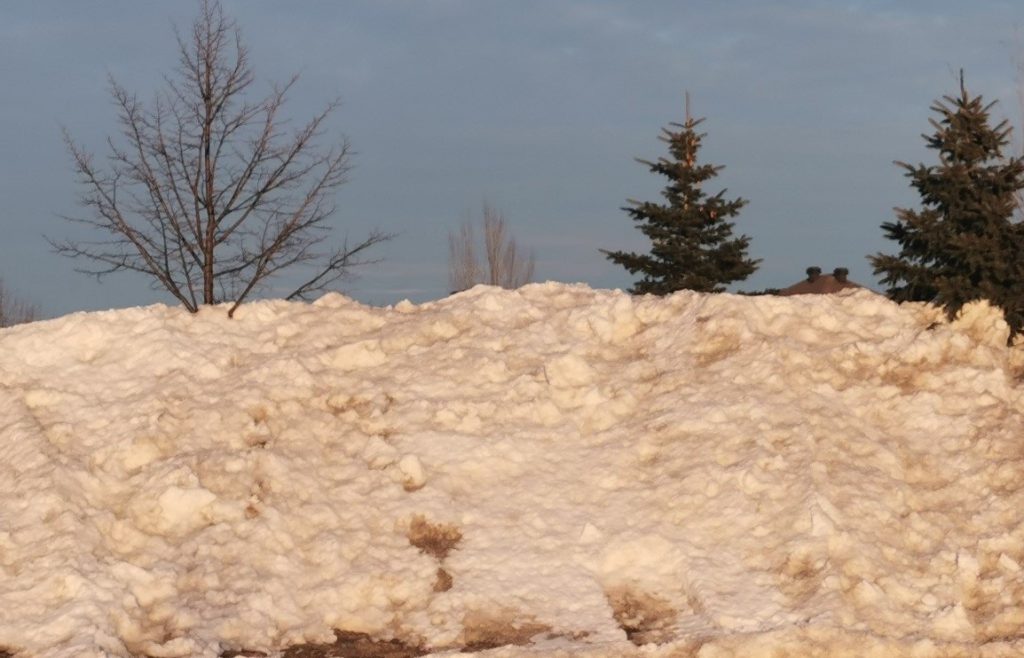Snow Total Breaks 10 Feet, RVCA Warns Of Spring Flood Potential
Will it ever end?
With the snowstorm that dumped more white stuff in the Manotick area last week, the total snowfall for this season has surpassed 310cm. To put that in perspective, the rim on a regulation basketball court and the cross bar on a football goalpost are both 10 feet, or 304.8 cm.
This year’s snowfall is the most we have had in 15 years. In the winter of 2007-08, the community saw a ridiculous 432.7 cm of snow. The record snowfall for a season is 463.8 cm of snow, set way back in 1886-87 when Sir John A. Macdonald.
While the skiers and snowboarders are having the springtime of their dreams, the rest of the community is in a mess. Snowbanks are not only high but they are extending further onto residential streets than they usually would. The snowbanks have made it difficult for motorists to see oncoming traffic or pedestrians, including children walking home from school, as they back out of their driveways.
The City of Ottawa snow removal budget went up to $85 million from $82 million this year. Councillor Tim Tierney, the Chair of the city’s Transportation Committee, says a snowstorm can cost the city anywhere from one to five million dollars. When there is this much snow, there are additional costs in removing snow and banks.
“We recognize the snow has to go somewhere,” said Tierney in an CTV Ottawa interview. “When it comes to street snow and where we’re putting them in dump trucks, our snow yards are successful. We have room for them.”
The snow is also costing many local residents who pay for snow removal services more. Most services charge a seasonal rate, but it only covers for up to 200 or 250 cm of snow. After that total is surpassed, there is a fee per clearance.
Spring Flood Potential
While the warm weather will eliminate one problem as the high snowbanks melt down, another problem is on the horizon. The Rideau Valley Conservation Authority’s Flood Forecasting team is working closely with its municipal and agency partners to prepare for potential spring flooding. As discussed below, it is important to be prepared for possible flood conditions over the next few weeks as spring returns to the Rideau Valley watershed.
The current short-term forecast indicates limited precipitation and seasonal temperatures (slightly above zero temperatures during the day and below zero at night); however, the daily temperature will begin to increase and there will likely be some rain as we move through March.
City of Ottawa crews have begun the annual ice removal program on the Rideau River between Rideau Falls and Bronson Avenue. Crews will work to keep the ice from reforming until the spring freshet occurs
Based solely on the fact we have above-average snow water content and above-normal water levels in some upper watershed lakes, there is potential for above-average flooding this spring across the Rideau Valley watershed, especially in low-lying areas which have flooded in the past.
Precipitation and temperature are two other key factors influencing actual flood conditions as we move through March and into April, which staff will monitor closely.
The short-term forecast suggests a slow melt with little precipitation, which is favourable for limited flooding for at least the first half of March.
With changing levels expected over the coming weeks, ice cover on lakes, ditches, local streams and rivers will continue to be unstable. Extreme caution should be exercised by everyone when near local waterbodies. Parents should inform their children of the risks and provide appropriate supervision.
As the temperatures start to warm up, ice jams are possible in local streams and rivers, as flows could quickly increase before the ice can melt. Residents are advised to monitor their local waterbody closely for signs of ice jams as spring progresses. RVCA staff will be monitoring conditions, but they always welcome observations from watershed residents.
Potential flooding along roadways is also a concern due to current snow/ice buildup on roadside ditches and some roads.
Residents in flood-prone or low-lying areas historically susceptible to flooding should take the necessary precautions to protect their property, such as:
- Ensuring sump pump is clear, in good working condition and has a backwater valve
- Ensuring easy access to a portable backup generator and pump
- Ensuring downspouts are clear and the outlet is at least 3 metres from the dwelling
- Securing items that might float away as flows increase
- Removing valuable items from basements or lower floors that could be subject to flooding
- Keeping emergency phone numbers handy
- Familiarizing yourself with your municipality’s Emergency Preparedness Plan
More information including the RVCA’s Flood Contingency Plan and real-time water level and stream flow data can be found at www.rvca.ca/watershed-conditions.
Because of the extreme snowfall this year, local residents with fire hydrants on their properties have had to continually dig them out to make them accessible in case of emergency.






